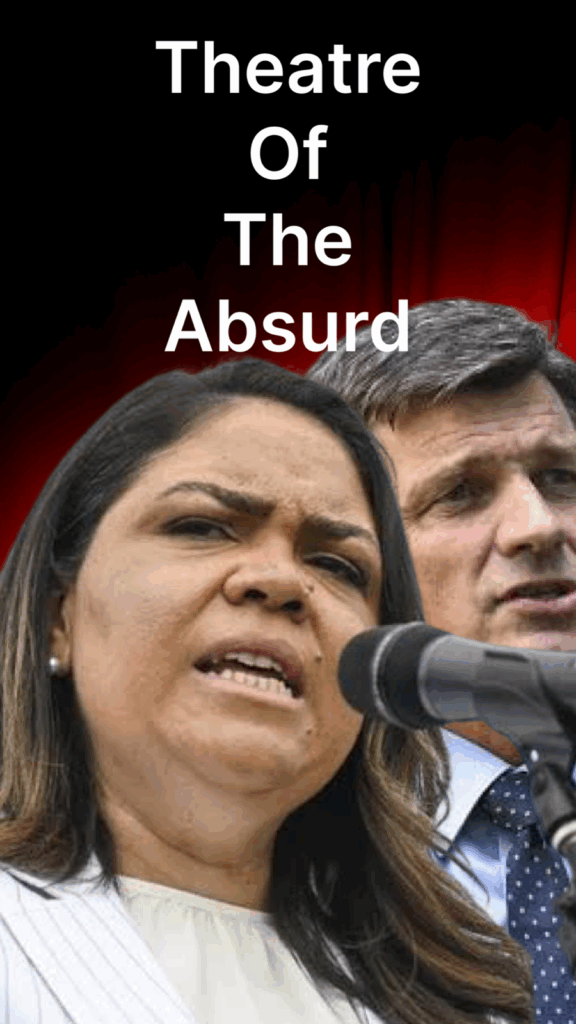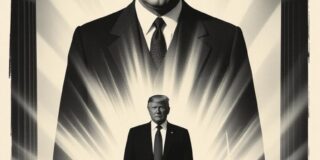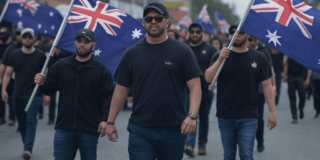
The Australian Liberal Party is at a critical juncture following its significant defeat in the federal election on May 3, 2025. This electoral loss was not merely a setback; it was a decisive repudiation of the divisive, right-wing populism espoused by Angus Taylor and Jacinta Nampijinpa Price. Their rhetoric, heavily influenced by One Nation and MAGA-style politics, alienated moderate voters and failed to address pressing economic issues, particularly the ongoing cost of living crisis. Price’s recent defection from the National Party to the Liberal Party, has sparked speculation about a potential leadership team comprising Taylor and Price, with the latter possibly serving as Taylor’s deputy. However, such a move threatens to further entrench the Liberal Party’s rightward drift, risking its electoral relevance and squandering opportunities to reconnect with the pragmatic concerns of everyday Australians.
The Election Fallout: A Rejection of Populism
The Liberal Party’s electoral collapse serves as a clear indicator of the electorate’s rejection of the divisive tactics employed by Taylor and Price. Taylor’s embrace of One Nation-style populism, characterised by anti-elite rhetoric and a focus on polarising cultural issues, alienated the moderate base that has historically been the backbone of the party’s success. His messaging, often cloaked in economic conservatism, but laced with appeals to rural and socially conservative voters, failed to resonate in urban and suburban electorates increasingly concerned with pragmatism and inclusivity. Similarly, Price’s MAGA-inspired rhetoric, which included attacks on “woke” culture and progressive institutions, struck a discordant note with voters who value Australia’s tradition of consensus-driven governance. The electorate’s rejection of these tactics was starkly evident in the Coalition’s loss of key metropolitan seats to Labor and the Teal independents, signalling a preference for unity and substantive policy over ideological crusades.
The Liberal Party’s miscalculation in adopting these strategies was exacerbated by its failure to adequately address the cost of living crisis, a defining issue of the election. Despite inflation stabilising at 2.4% annually in the March 2025 quarter – within the Reserve Bank of Australia’s target range – voters remained deeply concerned about rising housing costs, energy prices, and grocery bills. These concerns reflected a broader anxiety about economic affordability, particularly for middle- and working-class families. This should have been fertile ground for the Liberal Party, which has long positioned itself as the party of economic management. However, under Taylor’s economic influence and Price’s focus on cultural battles, the Coalition failed to articulate a compelling plan to alleviate these pressures, allowing Labor to dominate the narrative with measures like energy bill relief and childcare subsidies. The election results underscore a fundamental truth: Australian voters reward parties that prioritise economic stability, social cohesion, and practical solutions. Entertaining a Taylor-Price leadership team that doubles down on failed populist strategies and neglects kitchen-table issues is tantamount to inviting further electoral irrelevance.
Angus Taylor’s Failure to Capitalise on the Cost of Living Crisis
The cost of living crisis presented a significant opportunity for Angus Taylor to connect with voters grappling with rising housing, energy, and grocery costs. As a former Energy Minister and a prominent economic spokesperson, Taylor possessed the credentials to craft a compelling narrative that could have bolstered the Liberal Party’s electoral prospects. A well-executed campaign focusing on practical solutions – such as tax relief, energy price stabilisation, or targeted subsidies – could have resonated with middle-class families, small businesses, and regional communities in key marginal seats. Yet, Taylor squandered this advantage through a combination of misaligned priorities, lack of a coherent policy platform, and a strategic overreach into populist territory.
Several factors contributed to Taylor’s failure. His messaging often veered into culture wars and anti-elite populism, reflecting the broader rightward drift of the Liberal Party. His focus on issues like energy policy disputes or critiques of government overreach overshadowed any potential to connect with voters on immediate concerns like housing affordability and grocery bills. Furthermore, the Coalition, under Taylor’s economic influence, struggled to articulate a clear set of policies to address cost of living pressures. While Labor offered tangible relief measures, the Liberal Party’s proposals, such as tax cuts or deregulation, were vague and failed to inspire confidence. Taylor’s regional focus and alignment with socially conservative voters alienated urban and suburban moderates, who felt the Liberals were out of touch with their struggles. This was particularly damaging in metropolitan seats, where the Teal independents capitalised on the Coalition’s disconnect.
Taylor’s past controversies, including the “grass-gate” scandal and questions about his handling of energy policy, further undermined his credibility as a trusted economic steward. His continued defence of fossil fuels and scepticism about renewable energy adoption came across as tone-deaf in an electorate concerned about both environmental sustainability and energy affordability. By prioritising divisive rhetoric over pragmatic solutions, Taylor not only failed to seize the cost of living crisis as a platform but also contributed to the Coalition’s broader reputational damage as a party disconnected from everyday Australians. His failure to leverage this issue underscores his strategic misjudgements and raises serious doubts about his suitability for leadership.
Jacinta Price’s Polarising Impact
Jacinta Price entered federal politics as a Country Liberal Party (CLP) senator for the Northern Territory in 2022 and sat with the National Party until her defection to the Liberal Party on May 8, 2025. Price emerged as a polarising figure during the election campaign. Leveraging her platform as an Indigenous woman, she challenged progressive orthodoxies and advocated for a colourblind approach to governance. Her rhetoric, heavily influenced by American MAGA-style populism, focused on critiquing “woke” social movements, rejecting identity politics, and opposing elite-driven policies, particularly in Indigenous affairs. While these positions energised a vocal segment of the Coalition’s conservative base, they proved toxic to the broader electorate, contributing significantly to the Coalition’s collapse.
Price’s emphasis on culture wars – through attacks on progressive institutions, scepticism of reconciliation frameworks, and dismissal of “woke” activism – clashed with the values of urban and suburban voters who prioritise inclusivity and social cohesion. Her critiques of Indigenous policy frameworks, including her leadership of the “No” campaign against the Voice to Parliament, alienated Indigenous communities, progressive voters, and moderates who viewed her stance as dismissive of systemic inequalities. Her adoption of MAGA-style talking points, including her use of the phrase “Make Australia Great Again” and a photo of her wearing a MAGA cap, reinforced perceptions of the Liberal Party as consumed by ideological battles rather than focused on pressing economic challenges like housing and grocery costs. This narrative contributed to the electorate’s rejection of the Coalition, as voters signalled a preference for policy substance over divisive posturing.
Price’s defection to the Liberal Party, announced less than a week after her re-election as a CLP senator, has intensified concerns about her mainstream appeal. Liberal moderates have expressed alarm, with one describing her as “electoral poison” due to her MAGA associations, fearing her move will push the party further to the right. Despite her popularity among conservatives, her focus on cultural issues and limited policy depth on economic matters have raised questions about her ability to broaden the party’s appeal. Her defection has also strained Coalition relations, with Nationals leader David Littleproud expressing disappointment and likening her move to “branch stacking” for Taylor’s leadership bid. Beyond the election, Price’s influence has shifted the Liberal Party’s brand toward social conservatism, deepening cultural divisions and damaging its reputation as a broad-based, inclusive force, particularly in metropolitan areas where the Teal independents have capitalised on the Coalition’s alienation of moderate voters.
Comparing Jacinta Price to Pauline Hanson
Price’s impact invites comparisons to Pauline Hanson, the leader of One Nation and a long-standing figure in Australian right-wing populism. Both women share a populist streak, rejecting progressive elites and advocating for “ordinary” Australians, but their backgrounds, strategies, and impacts differ in critical ways.
Background and Political Entry:
Price, an Indigenous woman from the Northern Territory, entered politics through the CLP. Her major-party affiliation and rapid rise within the Coalition give her a broad platform but subject her to party discipline.
Hanson, a white, working-class Queenslander, founded One Nation after being expelled from the Liberal Party in the 1990s, capitalising on economic and cultural anxieties as an outsider. Her fringe status allows her greater freedom to push controversial positions but limits her mainstream influence.
Ideological Alignment:
Price advocates a colourblind approach, rejecting identity politics and progressive Indigenous policies while targeting “woke” culture. Her rhetoric aligns with MAGA-style populism but is tempered by her Coalition affiliation.
Hanson’s ideology centres on nationalism, anti-immigration sentiment, and scepticism of multiculturalism, championing “mainstream” Australians against globalist elites. Her rhetoric is blunter and more inflammatory, reflecting her fringe status.
Political Strategy and Messaging:
Price operates within the Coalition, using its platform to energise the conservative base while attempting to broaden appeal through her Indigenous identity. Her focus on cultural issues often overshadows economic concerns, limiting her appeal to moderates.
Hanson’s strategy revolves around maintaining One Nation’s relevance as a protest vote, using provocative rhetoric to generate media attention and influence mainstream parties. Her grievance-driven messaging targets disaffected voters but confines her appeal to a niche base.
Electoral Impact:
Price’s polarising rhetoric contributed to the Liberal Party’s defeat by alienating moderate voters in urban and suburban seats. Her role amplified the party’s rightward drift, overshadowing pragmatic issues like the cost of living crisis. Her defection to the Liberals has further strained Coalition unity, with moderates fearing it will entrench the party’s focus on fringe issues.
Hanson’s One Nation has secured a small but loyal voter base, primarily in regional areas, but its limited electoral success confines its impact to Senate seats and preference flows. Her rhetoric has influenced the Coalition’s rightward shift but has not translated into broad electoral gains.
Broader Influence:
Price has shifted the Coalition’s discourse toward social conservatism, deepening internal divisions and risking further erosion of its moderate base. Her potential leadership role would amplify this trend, weakening the party’s role as a credible opposition.
Hanson has normalised debates about immigration and multiculturalism, pressuring the Coalition to adopt harder lines on cultural issues. Her disruptive presence has fragmented the political landscape but remains marginal due to her limited appeal.
Comparison Summary:
Price and Hanson share a populist approach, challenging progressive norms and amplifying cultural debates, but Price’s Coalition affiliation gives her greater potential to shape mainstream politics. Her Indigenous identity and focus on policy reform distinguish her from Hanson’s nationalism-driven agenda, but both struggle to appeal to moderate voters. Price’s defection to the Liberal Party makes her missteps more consequential, as her alienation of urban electorates contributed to the Coalition’s defeat, whereas Hanson’s fringe status limits her direct impact. In a Taylor-Price leadership team, Price’s influence could mirror Hanson’s in energising a conservative base while risking long-term irrelevance among moderates, but her role within a major party heightens the stakes for Australia’s political stability.
The Case for a Taylor-Price Leadership Team
Despite their contributions to the Coalition’s defeat, the case for a Taylor-Price leadership team rests on their appeal to the Liberal Party’s right-wing faction. Taylor’s economic conservatism, regional appeal, and reputation as a fierce parliamentary performer make him a natural contender for leadership among those who believe the Liberals lost because they were not conservative enough. His ability to galvanise the party’s base, particularly in rural and outer-suburban areas, could position him as a bridge between traditional business-oriented supporters and socially conservative voters. Price, with her charisma and Indigenous identity, offers a chance to counter accusations of being out of touch while energising conservatives with her “anti-woke” rhetoric. Her defection to the Liberals, reportedly encouraged by former Prime Minister Tony Abbott, and her hinted candidacy for deputy leader boost Taylor’s leadership bid, creating a male-female, Indigenous-conservative ticket that could elevate her to the upper echelons of politics. Together, they could tap into cultural and economic alienation, creating a coherent, if divisive, narrative.
However, this strategy ignores the electoral reality: the Liberal Party’s path to power lies in reclaiming the centre, not consolidating its right-wing base. Taylor’s failure to leverage the cost of living crisis, despite moderate inflation, and Price’s focus on culture wars risk alienating the moderate voters who abandoned the Coalition in droves. Their alignment with Hanson-like populism, while appealing to a niche base, is ill-suited to Australia’s pragmatic political culture, as evidenced by the electorate’s rejection of both One Nation and the Liberal Party’s populist turn. Liberal moderates, who advocate for a return to the centre and a focus on urban seats, have expressed alarm at Price’s defection, with one describing the Taylor-Price pairing as taking the party “further from the centre, into fringe issues.” The move has also strained Coalition relations, with Nationals figures like Matt Canavan comparing Price’s defection to Lidia Thorpe’s party-switching, accusing her of disenfranchising voters.
The Rightward Drift: A Recipe for Disaster
A Taylor-Price leadership team would almost certainly pull the Liberal Party further to the right, doubling down on the strategies that led to its electoral humiliation. Taylor’s economic conservatism, increasingly overshadowed by One Nation-style populism on issues like immigration and energy policy, puts him at odds with voters who demand meaningful environmental action. His scepticism of ambitious climate policies risks rendering the party unelectable in key battleground seats. Price’s MAGA-inspired focus on culture wars – through attacks on progressive institutions and rejection of “woke” movements – would further alienate moderates who see such rhetoric as a distraction from economic challenges like housing affordability. Her insistence on ideological terms, evident in her campaign rhetoric and defection statement calling for a return to “core Liberal Party values,” leaves little room for the nuanced politics that define successful Australian governments.
The Liberal Party’s rightward drift under Taylor and Price would have strategic consequences, ceding the centre to Labor and the Greens while empowering the Teal independents to further erode the party’s metropolitan base. This trajectory echoes Hanson’s impact on One Nation, which has remained a marginal force due to its inability to appeal beyond a niche base. Unlike Hanson, however, Price and Taylor operate within a major party, making their alienation of moderate voters more damaging to the Liberal Party’s prospects and Australia’s two-party system. The backlash from Liberal moderates, who see Price’s defection as a “moderate’s nightmare” and a step toward entrenching culture wars, underscores the risks of this leadership ticket.
Weakening the Opposition and Australia’s Democracy
Australia’s democracy depends on a robust opposition to hold the government accountable, scrutinise policies, and offer a viable alternative vision. A Taylor-Price leadership team would undermine this critical function. Taylor’s failure to address the cost of living crisis, and Price’s prioritisation of culture wars demonstrate a disconnect from the pragmatic concerns of mainstream voters, weakening the Liberal Party’s capacity to fulfil its democratic role. Their focus on ideological battles, reminiscent of Hanson’s grievance-driven populism, would limit the party’s ability to appeal to a broad electorate, rendering it an ineffective counterweight to the government.
An opposition mired in internal divisions and ideological purity cannot effectively challenge the government, potentially leading to policy overreach or complacency. Price’s defection has already exacerbated tensions within the Coalition, with Nationals leaders expressing dismay and moderates fearing a loss of urban seats. A Taylor-Price leadership would likely deepen factional tensions, pitting moderates against conservatives and paralysing the party’s ability to develop a cohesive agenda, much as Hanson’s leadership has confined One Nation to the margins. Moreover, a weakened Liberal Party risks ceding ground to fringe parties like One Nation and independents, further fragmenting the political landscape. Taylor and Price, while charismatic, lack the pragmatism and broad appeal necessary to unite the party and rebuild trust with the electorate.
The Path Forward: Reclaiming the Centre
The Liberal Party’s future lies in rejecting the failed strategies of MAGA, One Nation, and Hanson-like populism and reclaiming its position as a broad-based, centre-right force. To rebuild trust with moderate voters, the party must prioritise economic competence, environmental responsibility, and social inclusivity. A leadership team that reflects these values – one which combines pragmatism with broad appeal – would be better positioned to steer the party toward recovery. The public endorsements of Sussan Ley by former Liberal premiers suggest a viable alternative that could unify the party and appeal to the centre, contrasting with the divisive Taylor-Price ticket.
The party must also address the structural challenges driving its rightward drift. The influence of factional powerbrokers and socially conservative voices, amplified by figures like Price and Taylor, has skewed its priorities, sidelining the moderate voices that once defined its success. A deliberate effort to rebalance internal dynamics, coupled with a commitment to evidence-based policy and inclusive rhetoric, is essential to restoring electoral competitiveness. Critically, the Liberal Party must learn from Taylor’s failure to capitalise on the cost of living crisis and Price’s alienation of moderate voters, prioritising kitchen-table issues over ideological crusades. Price’s defection, while a strategic move to bolster Taylor’s leadership bid, risks entrenching the party’s focus on fringe issues, as warned by moderates who advocate for a return to Menzies’ and Howard’s broader vision.
Conclusion
The Liberal Party’s catastrophic defeat in the 2025 election was a clear rejection of the divisive, right-wing populism championed by Angus Taylor and Jacinta Price, compounded by Taylor’s failure to leverage the cost of living crisis, and Price’s polarising MAGA-inspired rhetoric. Price’s defection from the National Party to the Liberal Party, and her potential role as Taylor’s deputy in a leadership bid, threaten to pull the party further to the right, alienating moderate voters and undermining its role as a credible opposition. Taylor’s strategic misjudgements and Price’s focus on culture wars, which echo Pauline Hanson’s grievance-driven populism, risk locking the Liberal Party into a cycle of ideological purity that mirrors One Nation’s marginalisation. While Price’s Indigenous identity and charisma distinguish her from Hanson, her major-party affiliation makes her missteps more consequential, as they contributed to the Coalition’s broader disconnect from the electorate and strained Coalition unity.
Australia’s democracy depends on a strong, united opposition capable of holding the government accountable. By embracing a leadership team that priorities ideological battles over electoral viability, the Liberal Party risks not only its own future but the health of Australia’s democratic system. The path forward lies in reclaiming the centre, a task for which Taylor and Price, like Hanson before them, are demonstrably ill-equipped. To recover, the Liberal Party must move beyond the populist temptations embodied by Taylor, Price, and Hanson, embracing leaders who can unite the party and reconnect with the pragmatic values of everyday Australians.



